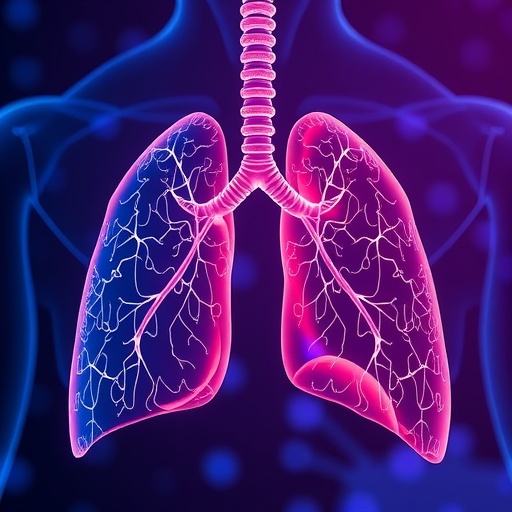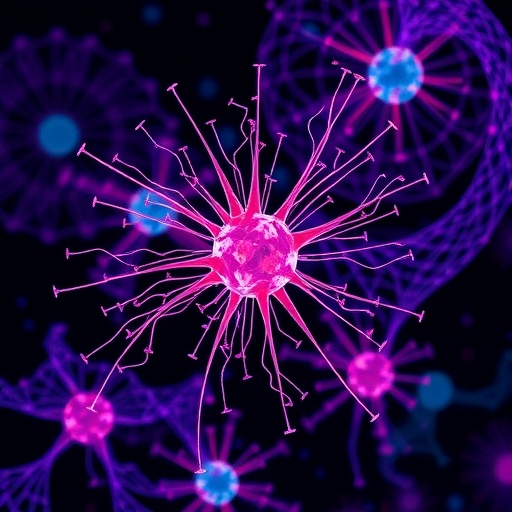In a groundbreaking study that could redefine the future of pulmonary medicine, researchers at the Mayo Clinic have uncovered a molecular “switch” in lung cells responsible for determining whether these cells engage in tissue repair or mount a defense against infection. This pivotal discovery elucidates the long-standing mystery of how alveolar type 2 (AT2) cells, critical to lung function and regeneration, toggle between their dual roles and offers promising avenues for revolutionary regenerative therapies tailored to combat chronic lung diseases.
AT2 cells occupy a unique niche in pulmonary biology, serving as both defenders against pathogens and as progenitor cells capable of repairing damaged alveolar tissue. Their role is twofold: maintaining the production of surfactant proteins necessary to keep air sacs open, and regenerating alveolar type 1 (AT1) cells, which facilitate oxygen exchange. Despite their undeniable importance, the mechanisms behind the AT2 cells’ loss of regenerative capacity in diseases such as pulmonary fibrosis, chronic obstructive pulmonary disease (COPD), and severe viral infections have long eluded scientists.
Through an elegant combination of single-cell transcriptomics, advanced imaging, and sophisticated preclinical lung injury models, the Mayo Clinic team meticulously mapped the developmental “life history” of AT2 cells. Their investigations revealed a critical temporal window—approximately one to two weeks following birth—during which newly differentiated AT2 cells retain a remarkable plasticity, poised between stemness and specialization. This temporal plasticity is governed by a finely tuned molecular circuit, orchestrated primarily by three key regulators: PRC2, C/EBPα, and DLK1.
Central to this circuit is the transcription factor C/EBPα, which acts as a molecular clamp, suppressing the stem cell-like activity of AT2 cells by locking them into a specialized state. In the adult lung, this clamp must be mechanically “released” following tissue injury to reinstate stemness and spur regeneration. The failure to remove this repression, the researchers found, is a critical impediment to repair, effectively explaining why lung infections can exacerbate chronic lung conditions by halting the repair process.
Their discovery that AT2 cells are functionally dichotomous—some committing exclusively to tissue regeneration while others prioritize immune defense—challenges previous assumptions that these cells multitask. It now appears that this division of labor is not merely incidental but is fundamental to lung homeostasis and recovery dynamics. The molecular switch identified by the team governs this binary fate choice, dictating whether an AT2 cell will aid in rebuilding lung architecture or focus on combating microbial threats.
Delving deeper into the mechanistic intricacies, the study illuminated how PRC2 contributes to chromatin remodeling, thereby reinforcing the identity lock on AT2 cells, while DLK1 facilitates signaling pathways integral to the timing of fate commitment. The interplay between these factors forms a tightly controlled regulatory network that ensures precise spatial and temporal regulation of AT2 cell functions during lung development and after injury.
This new understanding offers a paradigm shift in approaching pulmonary diseases marked by defective tissue repair. By targeting the molecular clamp—specifically C/EBPα—therapeutic strategies could be developed to unlock the regenerative potential of AT2 cells in adults. Such interventions may not only enhance tissue repair efficacy but also mitigate pathological fibrosis, a debilitating hallmark of chronic lung ailments.
Moreover, the insights from this research pave the way for innovative diagnostic tools. The ability to detect when AT2 cells become trapped in a particular functional state could serve as an early biomarker, signaling the onset or progression of lung pathology long before irreversible damage occurs. This aligns seamlessly with Mayo Clinic’s Precure initiative, which prioritizes early disease detection and preemptive intervention to forestall organ failure.
The study further informs the Genesis initiative, Mayo Clinic’s ambitious program designed to prevent organ failure and restore functionality through regenerative medicine. The current focus includes the ex vivo expansion of human AT2 cells, coupled with efforts to pharmacologically or genetically remove the repressive clamp. Ultimately, this could culminate in cell replacement therapies for patients suffering from advanced lung diseases, offering a regenerative solution where currently only symptomatic relief is available.
Douglas Brownfield, Ph.D., the senior author of the study, emphasized the transformative potential of these findings: “Understanding the molecular circuitry that dictates AT2 cell fate is vital. It’s not just about activating repair pathways; it’s about releasing the brakes. We now have a blueprint for how to restore the delicate balance between repair and defense, which could revolutionize treatment for millions affected by lung diseases.”
Published in Nature Communications, this landmark research stands at the intersection of developmental biology, regenerative medicine, and pulmonary pathology. Its implications extend beyond lung disease, promising insights into cellular plasticity and stem cell regulation that could inspire regenerative strategies across organ systems.
As the scientific community awaits further developments, the Mayo Clinic team’s next steps involve clinical translation—testing agents that modulate C/EBPα activity and expanding patient-derived AT2 cells for therapeutic use. This work not only opens new therapeutic frontiers but also rekindles hope for millions suffering from chronic respiratory illnesses worldwide.
This discovery exemplifies the cutting-edge innovation that Mayo Clinic fosters: integrating basic science with clinical ambition to transform understanding into healing. By decoding the molecular switches of regeneration, the research lays down a blueprint for future therapies that might not only halt the progression of devastating lung diseases but someday restore full respiratory function.
Subject of Research: Regulation of alveolar type 2 (AT2) cell fate and plasticity in lung repair and defense
Article Title: A molecular circuit regulates fate plasticity in emerging and adult AT2 cells
News Publication Date: 14-Oct-2025
Web References:
– Mayo Clinic: https://www.mayoclinic.org/
– Nature Communications Article: https://www.nature.com/articles/s41467-025-64224-1
Keywords: alveolar type 2 cells, lung regeneration, cellular plasticity, pulmonary fibrosis, chronic obstructive pulmonary disease, C/EBPα, molecular switch, stem cell regulation, lung repair, regenerative medicine, pulmonary infection, tissue homeostasis
Tags: alveolar type 2 cell functionchronic lung disease treatment advancementschronic obstructive pulmonary disease studiesfuture of pulmonary medicineinnovative approaches to lung injury modelsMayo Clinic pulmonary researchmechanisms of lung cell regenerationmolecular switches in tissue repairpulmonary fibrosis research breakthroughsregenerative therapies for lung diseaserole of surfactant proteins in lung healthsingle-cell transcriptomics in lung biology





